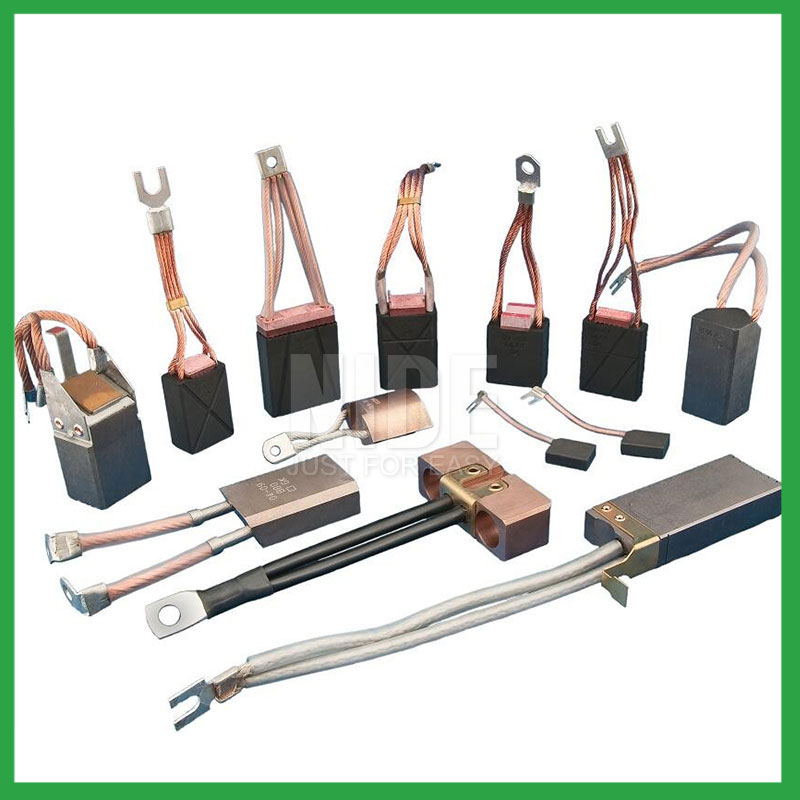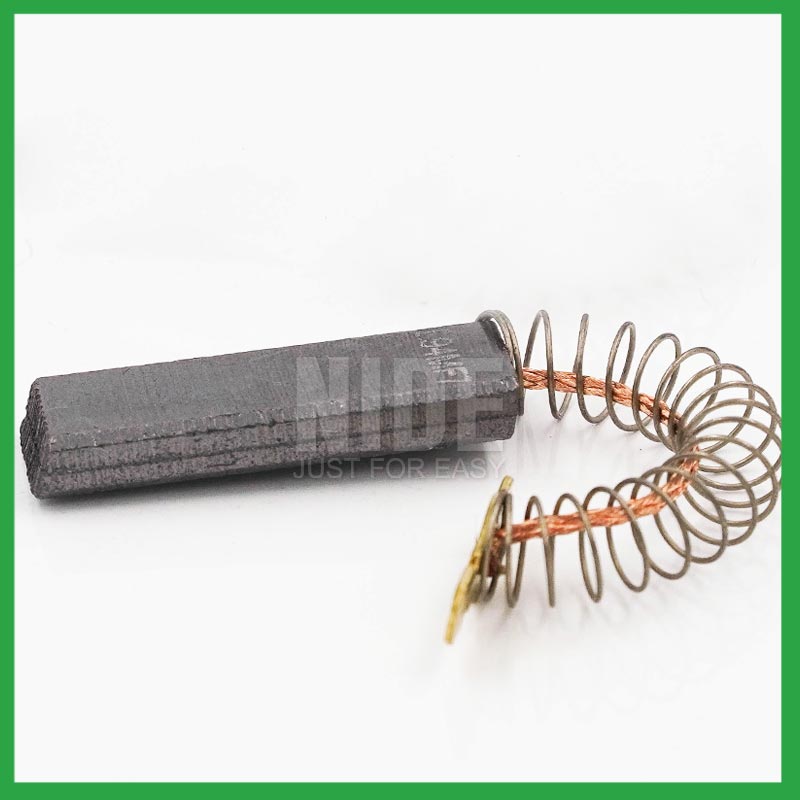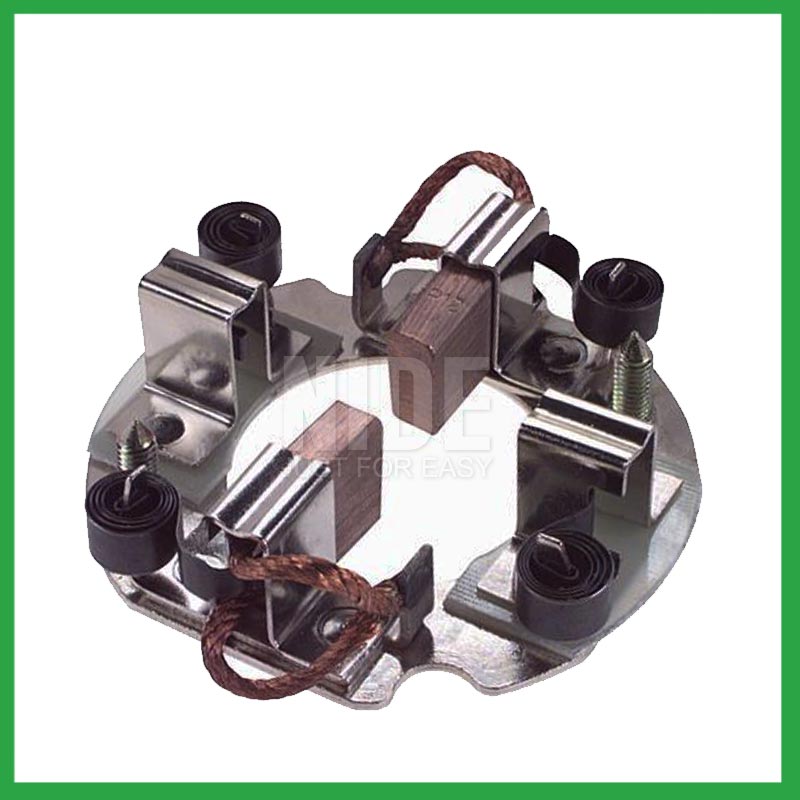2024-09-02
In the world of electric motors, generators, and other electrical machinery, brushes play a critical role in conducting current between stationary wires and moving parts, such as the rotating armature or commutator. Two common types of brushes used in these applications are carbon brushes and copper brushes. Each type has its own distinct properties, advantages, and applications. Understanding the differences between carbon brushes and copper brushes is essential for selecting the right brush material for specific motor or generator requirements. Nide International, a leading manufacturer of motor components, provides high-quality carbon and copper brushes designed to meet the diverse needs of various industries. This article explores the key differences between carbon brushes and copper brushes, their respective benefits, and their applications in modern electrical machinery.
Carbon brushes are composed primarily of carbon, often blended with graphite and other materials to enhance their properties. Carbon brushes are widely used in a variety of electrical machinery due to their favorable characteristics.
Key Characteristics of Carbon Brushes:
Softness and Self-Lubrication:
Carbon brushes are softer than copper brushes, which allows them to wear down gradually, maintaining consistent contact with the commutator or slip rings. The graphite content in carbon brushes also provides self-lubricating properties, reducing friction and wear on the commutator.
Low Friction:
The low friction of carbon brushes helps minimize energy loss and heat generation during operation. This makes carbon brushes ideal for high-speed applications where reducing wear and maintaining efficiency are critical.
Good Electrical Conductivity:
While carbon brushes do not conduct electricity as efficiently as copper brushes, their conductivity is sufficient for most applications. The reduced conductivity is often compensated by the brush's ability to minimize sparking and reduce electrical noise.
Longer Life and Less Commutator Wear:
The softer nature of carbon brushes leads to less wear on the commutator, extending its life. Additionally, carbon brushes typically have a longer lifespan than copper brushes due to their ability to maintain smooth contact over time.
Applications of Carbon Brushes:

Copper brushes, as the name suggests, are made primarily of copper or copper alloys. Copper brushes are known for their excellent electrical conductivity and are used in applications where high current transfer is required.
Key Characteristics of Copper Brushes:
High Electrical Conductivity:
Copper brushes have superior electrical conductivity compared to carbon brushes, making them ideal for applications that require efficient current transfer. This high conductivity reduces voltage drop across the brush-commutator interface, ensuring better performance in high-power applications.
Higher Hardness and Wear:
Copper brushes are harder than carbon brushes, which means they can cause more wear on the commutator or slip rings over time. However, this hardness also allows them to handle higher mechanical loads and withstand more rigorous operating conditions.
Increased Friction:
The increased friction of copper brushes can lead to higher heat generation during operation. This can be a disadvantage in high-speed applications, where excessive heat could cause damage to the motor or generator components.
Sparking and Electrical Noise:
Due to their higher conductivity, copper brushes are more prone to sparking and generating electrical noise. This can be an issue in sensitive electronic applications where minimizing interference is important.
Applications of Copper Brushes:

The choice between carbon brushes and copper brushes depends on the specific requirements of the application. Here are some considerations to help determine which brush material is best suited for a given use case:
1. Electrical Conductivity:
2. Wear and Maintenance:
3. Operating Environment:

As industries continue to evolve, there is a growing demand for brushes that offer better performance, longer life, and reduced maintenance. Nide International is at the forefront of these advancements, developing innovative brush materials and designs that cater to the changing needs of various sectors.
Hybrid Brushes:
Eco-Friendly Materials:
Understanding the differences between carbon brushes and copper brushes is crucial for selecting the right component for your motor or generator. Each type of brush offers unique advantages that make it suitable for specific applications, whether it's the long-lasting, low-friction properties of carbon brushes or the high conductivity and durability of copper brushes.
Nide International’s commitment to quality and innovation ensures that its brushes meet the highest standards of performance, reliability, and durability. By offering a range of carbon and copper brushes tailored to various industrial needs, Nide International helps ensure that your electrical machinery operates efficiently and effectively, no matter the application.
Product: 80-120V Start motor copper carbon brush generator graphite brush